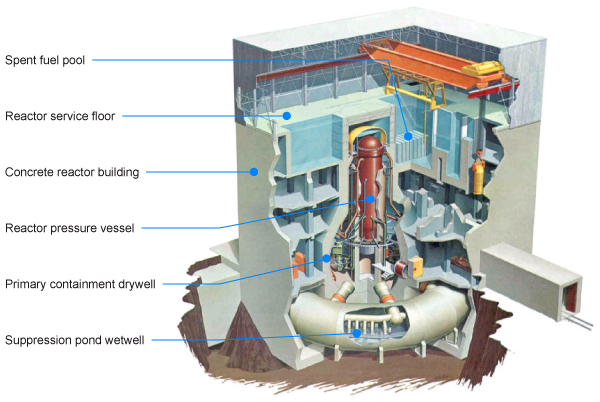Tepco President Hirose said he agreed to accept the offer of help
in discussions with U.S. Energy Secretary Ernest Moniz as they visited
Fukushima No. 1 on Friday to inspect preparations to remove spent fuel rods
from the storage pool of reactor 4.
The plant has recently seen a series of setbacks, including
radioactive water gushing from storage tanks into the Pacific. The incidents,
many of them caused by human error, have added to concerns about Tepco’s
ability to safely dismantle the complex, which suffered multiple meltdowns
after being hit by the March 2011 quake and tsunami.
Following criticism of its perceived reluctance to accept foreign
help, Japan has recently begun to show more willingness to do so.
Final preparations are currently being made to remove fuel rods from
the uncovered cooling pool of unit 4 — one of four reactor buildings damaged in
the crisis, and the one considered at highest risk. Removing the fuel rods from
the cooling pool is the first major step in a decommissioning process that is
expected to take decades.

The fuel removal at reactor 4 was given preliminary approval by
regulators Wednesday and is set to start by the middle of the month following a
final go-ahead.
“As Japan continues to chart its sovereign path forward on the
cleanup at the Fukushima site and works to determine the future of their energy
economy, the United States stands ready to continue assisting our partners in
this daunting yet indispensable task,” Moniz said in a statement late Friday.
He said a Japan-U.S. commission to strengthen cooperation in civil
nuclear research and development, as well as Fukushima cleanup, emergency
response and regulatory issues, will meet in Washington this week.
Despite public concerns over potential radiation risks from the
No. 1 plant, the ruling Liberal Democratic Party has pushed for a restart of
the country’s other nuclear reactors, which are currently all offline for
safety checks. Moniz said he expects atomic power will remain a crucial part of
the global energy mix as nations try to mitigate global warming.
“We will work together to tackle many challenges toward
decommissioning,” Hirose said in an interview with public broadcaster NHK. “I
have high hopes that we will be able to benefit from U.S. experience and
expertise at Fukushima No. 1.”
Hirose said the two sides hope to contribute to global nuclear
power by sharing technology in stabilizing and decommissioning the plant.
In a speech Thursday in Tokyo, Moniz said: “The success of the
cleanup also has global significance. So we all have a direct interest in
seeing that the next steps are taken well, efficiently and safely.”
Moniz, escorted by Hirose, inspected the reactor 4 pool area, as
well as storage tanks for contaminated water, radioactive water treatment units
and other facilities at the plant.
The reactor 4 building, damaged by hydrogen explosions in March
2011, remains a source of international concern about a catastrophic open-air
meltdown in case of a pool collapse, despite Tepco’s repeated reassurances that
it has reinforced the pool and that the building can withstand another major
earthquake.
Tepco also has appointed as an adviser a former U.S. regulator who
led the cleanup of the 1979 Three Mile Island nuclear diaster in Pennsylvania.


No comments:
Post a Comment